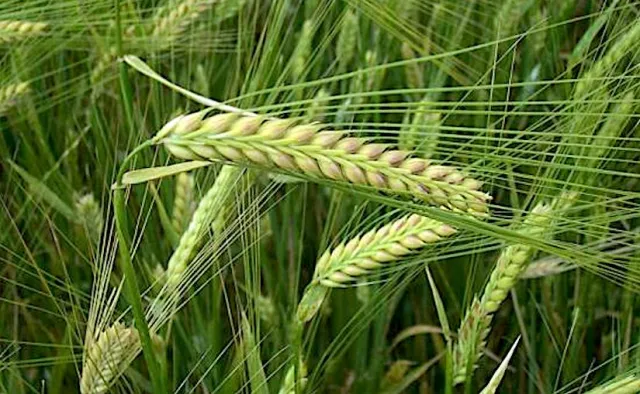Share this Article

Introduction
Sweet Flag is a perennial herb with a long history of medicinal and fragrant usage. It is formally known as Acorus calamus and is often referred to as Bojo in many cultures. This plant, which grows in marshes and wetlands, is prized for both its medicinal qualities and unique scent. Sweet Flag has been used for millennia in traditional medicine and is still a topic of interest for scholars and herbalists.
Botanical Description
With long, sword-shaped leaves and a distinct, sweet scent, Sweet Flag is a semi-aquatic plant. It thrives in moist areas like marshes, ponds, and riverbanks.
The plant is distinguished by:
Scientific Name: Acorus calamus
Common Names: Bojo, Sweet Flag, Calamus, Vacha (in Ayurveda), Bach (in Hindi)
Family: Acoraceae
Habitat: Riverbanks, wetlands, and marshes, particularly in temperate and subtropical areas.
Appearance: Green leaves that are long and slender and have a fragrant rhizome (underground stem)
Growth Conditions: prefers places that are moist and swampy and receive partial to full sunlight.
Propagation: Seeds are also utilized, but rhizome division is the primary method.
Chemical Composition
Sweet Flag has a number of bioactive substances, such as:
Asarone: Known for its sedative and anticonvulsant effects
Beta-asarone: Some types include it, but high doses can be harmful.
Essential Oils: contribute to its therapeutic and fragrant qualities.
Tannins and Glycosides: possess both antibacterial and anti-inflammatory properties.
Traditional and Medicinal Uses
Traditional medical systems including Chinese medicine, Ayurveda, and folk treatments have all made extensive use of sweet flag. Among its well-known advantages are:
- Digestive Aid
Traditional medical systems including Chinese medicine, Ayurveda, and folk treatments have all made extensive use of sweet flag. Among its well-known advantages are:
- Flatulence
- Acid reflux
- Loss of appetite
- Colic in infants (small doses)
- Respiratory Health
Sweet Flag's antibacterial qualities have led to its use in the treatment of respiratory ailments like:
Colds and coughs
The bronchitis
Having asthma
congestion of the sinuses
It is often used in herbal steam inhalations or consumed as a decoction to clear the respiratory tract.
- Brain and Nervous System Benefits
Bojo is used as a brain tonic by Ayurvedic practitioners to enhance mental clarity, memory, and focus. It is thought to offer relaxing qualities that lessen tension and anxiety. Moreover, it has been utilized for:
Treating epilepsy and seizures
Enhancing cognitive function
Alleviating symptoms of insomnia
4. Antimicrobial and Antiseptic Uses
The plant's inherent antibacterial qualities make it beneficial for the following conditions:
Injuries and wounds
Skin infections.
fungus-related ailments such as athlete's foot
Its paste or extract is often applied topically to the affected area.
- Pain Relief and Anti-Inflammatory Effects
Sweet Flag is advantageous for the following because of its analgesic and anti-inflammatory qualities:
Arthritis and joint discomfort
Pain in the muscles
Headaches
This substance is frequently applied externally as herbal oils or poultices.
- Detoxification and Blood Purification
The herb is well-known for its ability to rid the body of toxins. Supported by it:
The function of liver
Kidney health condition
elimination of toxic chemicals from the circulation.
Cultural and Ritual Significance
Sweet Flag is utilized for ritualistic and spiritual purposes in many cultures. Among its conventional applications are:
The dried rhizome is smoked as incense to promote relaxation and purification.
Protective Charm: It is positioned at gateways in many cultures to keep off evil spirits.
Religious Ceremonies: Because of its auspicious qualities, it is used in Ayurvedic and Hindu rites.
Culinary Uses
Sweet Flag is not a common culinary ingredient, however it has been used sparingly for:
Herbal teas with flavor
Infusing alcoholic liquids and liquors
Improving the flavor of preserves and pickles
How to Grow and Care for Sweet Flag
Here are some essential pointers if you want to grow bojo:
- Soil: Prefers moist, well-drained soil, ideally loamy or clayey
- Watering: Requires regular watering, thrives in damp conditions
- Sunlight: Grows well in partial to full sunlight
- Propagation: Best grown through rhizome division rather than seeds
- Pests and Diseases: Generally pest-resistant, but watch out for fungal infections in overly wet conditions
Safety and Precautions
Despite its many advantages, Sweet Flag should be used carefully:
Beta-asarone, a substance that can be harmful in high concentrations, is present in several types.
Hallucinations or impacts on the nervous system may result from prolonged usage or large dosages.
Excessive use should be avoided by small children and pregnant women.
Before using it for therapeutic purposes, always get medical advice.
Research and Scientific Studies
Modern research is exploring the pharmacological benefits of Sweet Flag, including:
Neuroprotective Effects: Research suggests that treating neurodegenerative illnesses like Alzheimer's may have advantages.
Anti-cancer Properties: According to preliminary study, it might have anti-tumor properties.
Its antimicrobial and anti-inflammatory properties support long-held assertions regarding its therapeutic benefits.
Conclusion
The amazing plant known as sweet flag (Bojo) has a long history of use in medicine, culture, and health. It is a useful natural cure because of its medicinal and fragrant qualities. It should be used sensibly, though, and one should be aware of both the possible risks and advantages. Sweet Flag continues to play a significant role in herbal medicine and botanical research, whether it is used as an aromatic herb, ornamental plant, or traditional medicine. We might find many more applications for this adaptable plant as science advances.
Categories:
Medicinal Plants of Nepal
Tags:
BojoHerb
,
SweetFlag
,
AcorusCalamus
,
HerbalRemedies







